Common Mistakes to Avoid
#1: Near & Dear: Keep Fruit Trees Away from Deer!
Deer and porcupine are some of the most important considerations. Unless there is zero pressure from destructive animals, a rare occurrence indeed, trees should be fenced or individually caged for protection. If they are browsed, fruit production may be delayed and awkward branching could develop. If a porcupine finds the trees, they’ll do their best to strip them of bark and branches. Too many young fruit trees die traumatically each year under completely preventable circumstances. Installing a deer fence before an orchard is planted is an ideal scenario but for many of us, we’ll need to cage individual trees until proper fencing can be installed. We can stake metal panel fencing used for livestock or chicken wire around trees for protection. Plastic deer fencing can be used as well.
Mature trees on full size rootstock can sometimes exist in areas where there is grazing from livestock but even large fruit trees can eventually be damaged from rubbing and ripping off bark. Trees will require protection from livestock, even those on standard rootstock.
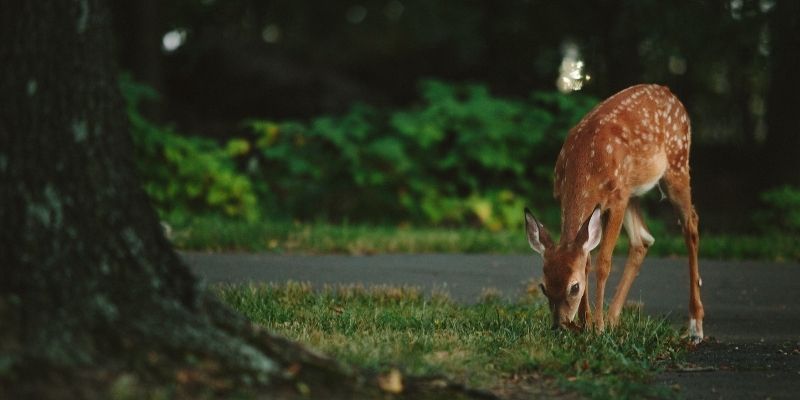
Not only do trees need to be protected from wildlife but some domesticated pets too. If there are dogs or puppies around that chew on stuff, keep them away from small trees. Think about all potential dangers and how the trees can be protected until they get larger.
Bear? Moose? They can be a nuisance too!
#2: Cold Spots
Planting on hillsides can be beneficial for orchards in colder locations. Sloping land drains frost to lower areas, away from trees. Late frosts can damage flowers in low areas, particularly varieties that bloom early. Identify where the fog settles and avoid planting in those spots when possible.
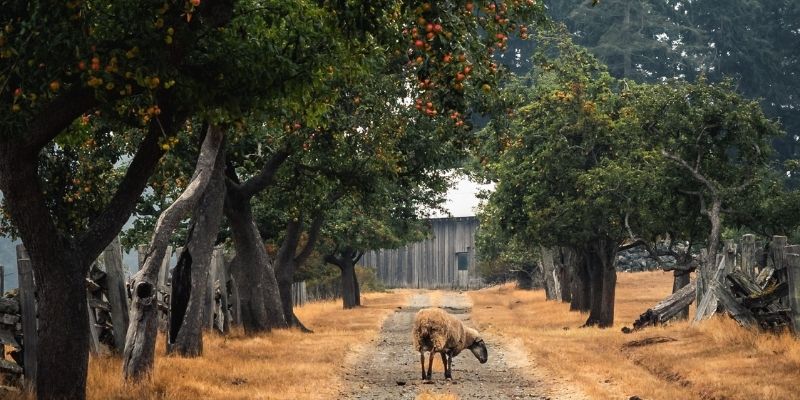
Trees on western slopes will have more exposure to harsh winter winds and may be more likely to develop southwest injury on bark. This happens when it thaws a bit on on a sunny winter afternoon as the sun becomes low in the sky, and then freezes suddenly as it becomes dark. Injured bark will eventually crack off and peel away, leaving an open wound for pathogens and borers to invade.
Planting on a northern orientation may help delay flowering in colder regions, an important consideration where late frosts can damage flowers that bloom early in the season.
Elevations between 100-300 ft above sea level are often great for orchards. These spots tend to have adequate air drainage and a buffer from more extreme temperatures of higher elevations and valleys.
#3: Avoid Eastern Red Cedar (Juniperus virginiana)
Eastern Red Cedar is an alternate host for a common fungus called cedar-apple rust. The rust affects the leaves and fruit of apple trees with bright reddish orange spots. Red cedar is native in some areas and has been introduced to others. It can infect apples with fungal spores within a few hundred yards or even several miles.It’s usually the closer plants which are a problem. In locations where red cedar can’t be removed, like a neighbors yard, there are resistant varieties like Liberty that can be planted.
Don’t be fooled by the common name, this isn’t a real cedar and shouldn’t be confused with Eastern White Cedar (Thuja occidentals) which poses no threat to apples whatsoever!
Cedar-apple rust needs red cedar and another plant in the rose family, such as an apple, hawthorn, serviceberry, or rose, to complete a lifecycle. When the fungal growths form on J. virginiana, they will sometimes look like small wooden beads, or galls, and other times like golf ball sized alien urchins with glowing red tentacles reaching into space. The visible symptoms on the apple leaf and fruit are bright reddish orange spots that blacken over time and may have teeny fungal tubes visible.
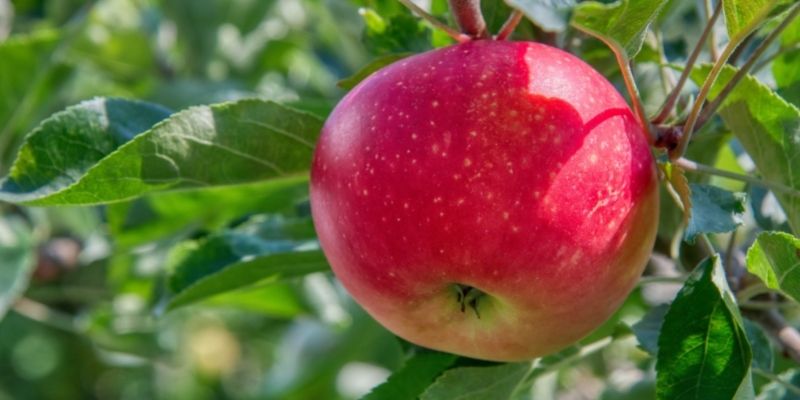
#4: Let There Be Light.
Avoid partial shade to full shade. Fruit trees need full sun and won’t fruit as well if they are in the shade part of the day. They’ll also be more prone to fungal conditions. Even a few hours less daylight can have a negative impact. Are there any buildings or tall deciduous trees nearby that will block sunlight?
Apples can be planted on different exposures as long as they receive full sun all day. They do especially well on a southeastern exposure with plenty of morning sunlight to dry off dew earlier in the day. The earlier in the day that the tree is able to dry out underneath, the less potential for fungal issues to build up.
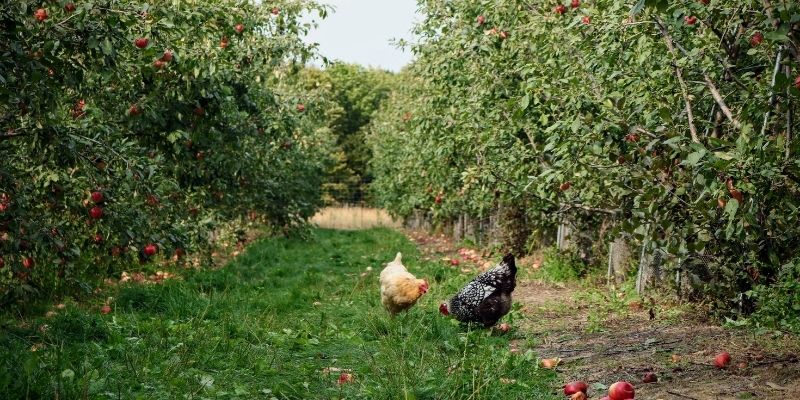
#5: Soggy Areas.
Is the soil wet or puddle up particular times of the year? Apples do best in soil that is well-drained year-round. If the site has standing water in the hole when planting, it’s probably too wet to be a good spot. Avoid soggy areas, wetlands, and low spots with poor drainage.
If there is heavy soil or signs of a high water table, then trees can be elevated between 1-3″ inches above soil grade to help with drainage. They will appear to be slightly mounded which will allow a larger portion of the root system to be free of standing water.
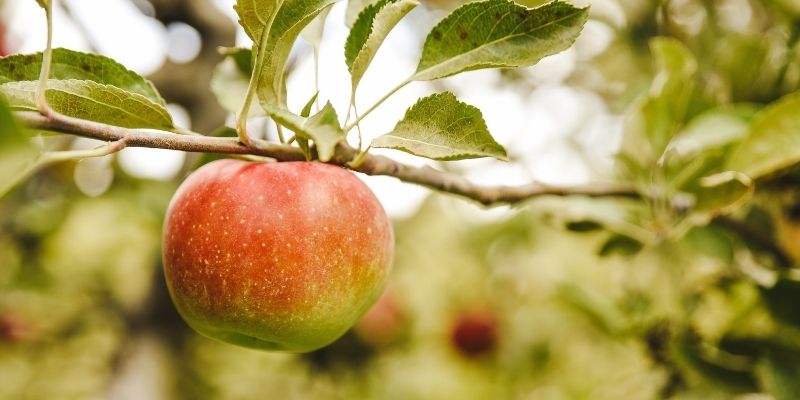
There is so much to consider when dreaming of and establishing fruit trees to savor for generations to come! As always, we’re honored to join you on the journey, Friends. And we’re not alone, as we join a legacy of humxns planting trees for thousands of years with thousands of hopes, fears and dreams. We’re right there with you!
Fruition’s current online tree growing resources are focused on Apple Trees (and it is also true that Pears, Plums, Peaches, Apricots and Cherries require much the same site choice, planting, and basic care considerations!) On that note, we hope you'll enjoy Fruition's free full library of Growing Trees Resources. Also recommended are all books by the late Michael Phillips and the online resources at the New England Tree Fruit Management Guide. In the meantime, enjoy more Fruition tree growing resources:
Apple Tree Growing Guide
Fruit Q&Qs pre-recorded Webinar Library
and join us for future live Fruit Q&Q webinars here!
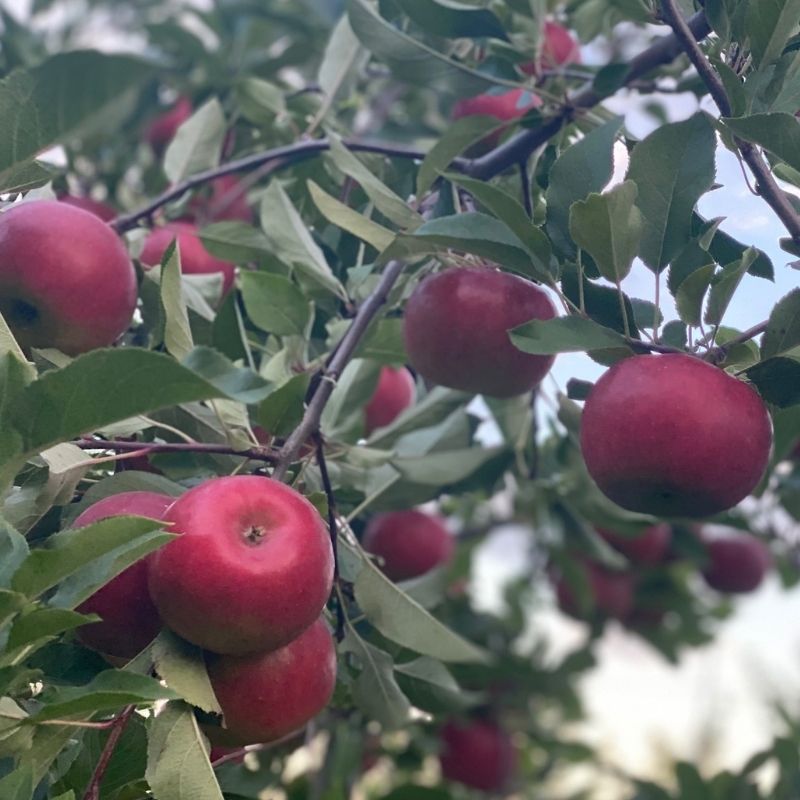
Be in the know:
Fruition's Fruit Tree Updates!
You'll receive seasonal tree insights & how-to's plus be the first to know about invitations to tree events on-farm and online!
Visit our newsletter website and subscribe to the 'Tree Updates' section
Enjoy our free online Apples & Organic Orcharding course and Tree Webinar Q&Qs Library in the meantime & don't be shy!
~When you join us, check your inbox for your welcome & access info! Stay tuned for our weekly organic gardening tips & inspiration, as well~
Sow Seeds & Sing Songs,

and the Many Beings of Fruition

